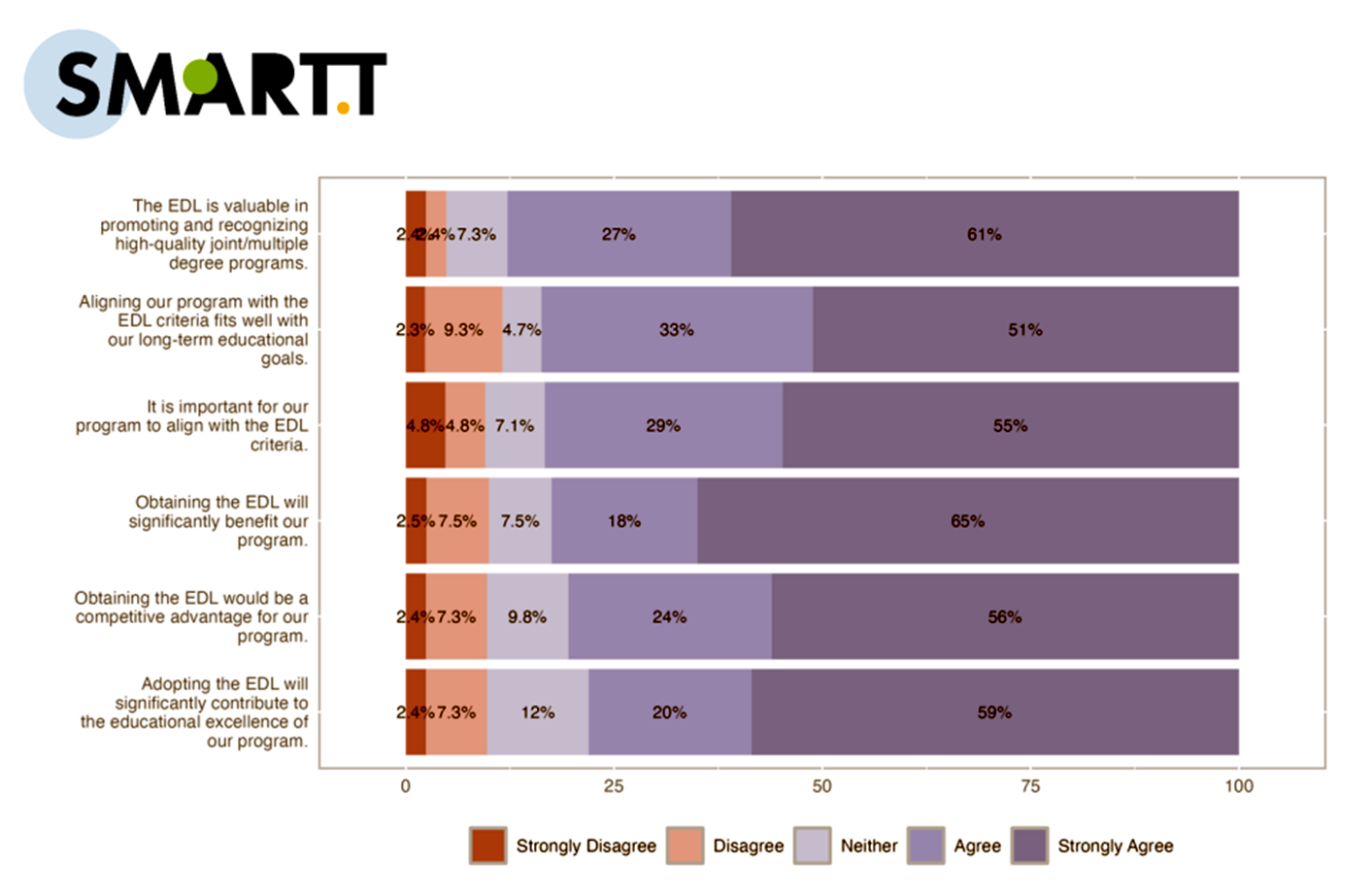
The last report delivered by SMARTT presents the data collected through a variety of research tools (a preselection questionnaire, a survey, interviews, and focus groups) that have gathered the perceptions of various educational agencies and institutions, identifying key considerations for EDL development and implementation.
Preselection
A preselection questionnaire was the main key to evaluating 95 European programmes within the CIVIS alliance: 60% of the total were joint degrees and multiple degrees. The distribution of programmes across fields of study indicates a dominance of Social Sciences (48%), followed by STEM fields (22%), in these types of programmes. Also, transdisciplinary programmes, representing 9.5% of those evaluated, offer a unique perspective on university mobility by combining multiple fields of study. In terms of international collaboration, 62% of the programmes claim to have an Erasmus Mundus, showcasing a commitment to fostering academic and professional relationships within and outside the European Union. Among the six European countries most involved in international mobility programs we certainly find Spain, the UK, France, Italy, Portugal, and Germany.
Survey results
Following the selection, the SMARTT survey has gathered the opinions of up to 50 joint programme managers.
While the overall sentiment towards the EDL is positive, the survey also reveals areas of uncertainty and hesitation. Some respondents expressed neutrality regarding the competitive advantage and promotion of educational excellence associated with the EDL. Additionally, concerns were raised about resource sufficiency and the perceived complexity of obtaining the label. This suggests a need for further engagement and resource planning to ensure the programme managers and staff feel fully prepared and supported in the process of aligning with the EDL.
